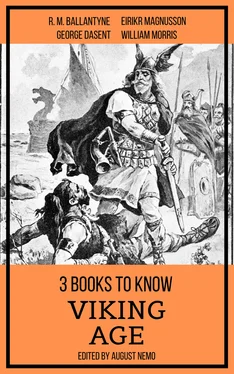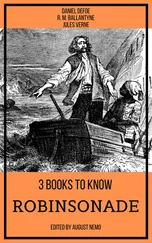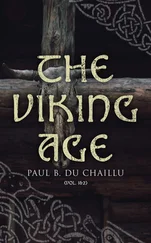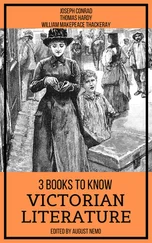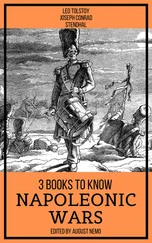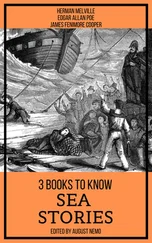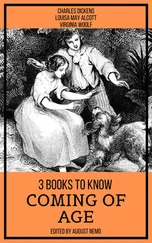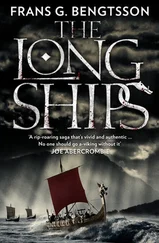During that interval matters had progressed much in the same way as we have already described, only that the natives had become a little more exacting in their demands while engaged in barter, and were, on the whole, rather more pugnacious and less easily pleased. There had been a threatening of hostilities once or twice, but, owing to Karlsefin’s pacific policy, no open rupture had taken place.
During that interval, too, Leif had made two trips to Greenland and back; a considerable amount of merchandise had been sent home; a few more colonists had arrived, and a few of the original ones had left; Thorward’s ship had been also brought to Vinland; and last, but not least, Snorro had grown into a most magnificent baby!
Things were in this felicitous condition when, early one beautiful spring morning, Snorro resolved to have a ramble. Snorro was by that time barely able to walk, and he did it after a peculiar fashion of his own. He had also begun to make a few desperate efforts to talk; but even Gudrid was forced to admit that, in regard to both walking and talking, there was great room for improvement.
Now, it must be told that little Olaf was particularly fond of Snorro, and, if one might judge from appearances, Snorro reciprocated the attachment. Whenever Snorro happened to be missed, it was generally understood that Olaf had him. If any one chanced to ask the question, “Where is Snorro?” the almost invariable reply was, “Ask Olaf.” In the event of Olaf not having him, it was quite unnecessary for any one to ask where he was, because the manner in which he raged about the hamlet shouting, howling, absolutely yelling, for “O’af!” was a sufficient indication of his whereabouts.
It was customary for Olaf not only to tend and nurse Snorro, in a general way, when at home, but to take him out for little walks and rides in the forest—himself being the horse. At first these delightful expeditions were very short, but as Snorro’s legs developed, and his mother became more accustomed to his absences, they were considerably extended. Nevertheless a limit was marked out, beyond which Olaf was forbidden to take him, and experience had proved that Olaf was a trustworthy boy. It must be remembered here, that although he had grown apace during these two years, Olaf was himself but a small boy, with the clustering golden curls and the red chubby cheeks with which he had left Greenland.
As we have said, then, Snorro resolved to have a walk one fine spring morning of the year one thousand and ten—or thereabouts. In the furtherance of his design he staggered across the hall, where Gudrid had left him for those fatal “few minutes” during which children of all ages and climes have invariably availed themselves of their opportunity! Coming to a serious impediment in the shape of the door-step, he paused, plucked up heart, and tumbled over it into the road. Gathering himself up, he staggered onward through the village shouting his usual cry,—“O’af! O’af! O’AF! O-o-o!” with his wonted vigour.
But “O’af” was deaf to the touching appeal. He chanced to have gone away that morning with Biarne and Hake to visit a bear-trap. A little black bear had been found in it crushed and dead beneath the heavy tree that formed the drop of the trap. This bear had been slung on a pole between the two men, and the party were returning home in triumph at the time that Snorro set up his cry, but they were not quite within earshot.
Finding that his cries were not attended to, Snorro staggered out of the village into the forest a short way, and there, standing in the middle of the path, began again,—“O’af! O’af! O’AF! O-o-o!”
Still there was no reply; therefore Snorro, stirred by the blood which had descended to him through a long line of illustrious and warlike sea-kings, lost his temper, stamped his feet, and screeched with passion.
Nothing resulting, he changed his mood, shouted “O’af!” once more, in heartrending accents, and—with his eyes half-shut and mouth wide open, his arms and hands helplessly pendent, his legs astraddle, and his whole aspect what is expressively styled in the Norse tongue begrutten—howled in abject despair!
In this condition he was found by the bear party not many minutes later, and in another moment he was sobbing out his heart and sorrows into the sympathetic bosom of his dearly-loved friend.
“What is it, Snorrie? What’s the matter?” inquired Olaf tenderly.
“Hik!—Me—hup!—O!—want—hif!—wak,” replied the sobbing child.
“It wants to walk, does it? So it shall, my bold little man. There, dry its eyes and get on my back, hup!—now, away we go! I’ll be back soon,” he said to Biarne, who stood laughing at them. “Be sure that you keep the claws of the bear for me.—Now, Snorrie, off and away! hurrah!”
“Hoo’ah!” echoed Snorro, as, holding tight with both his fat arms round Olaf’s neck, he was borne away into the wilderness.
Olaf’s usual mode of proceeding was as follows:
First he dashed along the track of the woodcutters for about half a mile. It was a good broad track, which at first had been cleared by the axe, and afterwards well beaten by the constant passage of men and horses with heavy loads of timber. Then he stopped and set Snorro on his legs, and, going down on his knees before him, laughed in his face. You may be sure that Snorro returned the laugh with right good-will.
“Whereaway next, Snorrie?”
“Away! a-way!” shouted the child, throwing up his arms, losing his balance, and falling plump—in sedentary fashion.
“Ay, anywhere you please; that means, no doubt, up to the sun or moon, if possible! But come, it must walk a bit now. Give me its hand, old man.”
Snorro was obedient to Olaf—and, reader, that was an amazing triumph of love, for to no one else, not even to his mother, did he accord obedience. He quietly took his guide’s hand, trotted along by his side, and listened wonderingly while he chatted of trees, and flowers, and birds, and squirrels, and wild beasts, just as if he understood every word that Olaf said.
But Snorro’s obedience was not perfect. Olaf’s pace being regulated by his spirits, Snorro soon began to pant, and suddenly pulled up with a violent “’Top!”
“Ho! is it tired?” cried Olaf, seizing him and throwing him over his shoulder into the old position. “Well, then, off we go again!”
He not only went off at a run, but he went off the track also at this point, and struck across country straight through the woods in the direction of a certain ridge, which was the limit beyond which he was forbidden to go.
It was an elevated ridge, which commanded a fine view of the surrounding country, being higher than the tree-tops, and was a favourite resort of Olaf when he went out to ramble with Snorro. Beyond it lay a land that was unknown to Olaf, because that part of the forest was so dense that even the men avoided it in their expeditions, and selected more open and easier routes. Olaf, who was only allowed to accompany the men on short excursions, had never gone beyond the ridge in that direction. He longed to do so, however, and many a time had he, while playing with Snorro on the ridge, gazed with ever increasing curiosity into the deep shades beyond, and wondered what was there! To gaze at a forbidden object is dangerous. We have already said that Olaf was a trustworthy boy, but he was not immaculate. He not only sometimes wished to have his own way, but now and then took it. On this particular occasion he gave way, alas! to temptation.
“Snorro,” said he, after sitting under a tree for a considerable time basking in the checkered sunshine with the child beside him, “Snorro, why should not you and I have a peep into that dark forest?”
“Eh?” said Snorro, who understood him not.
Читать дальше
